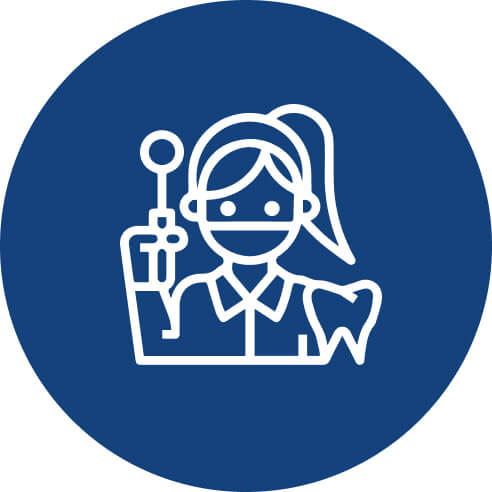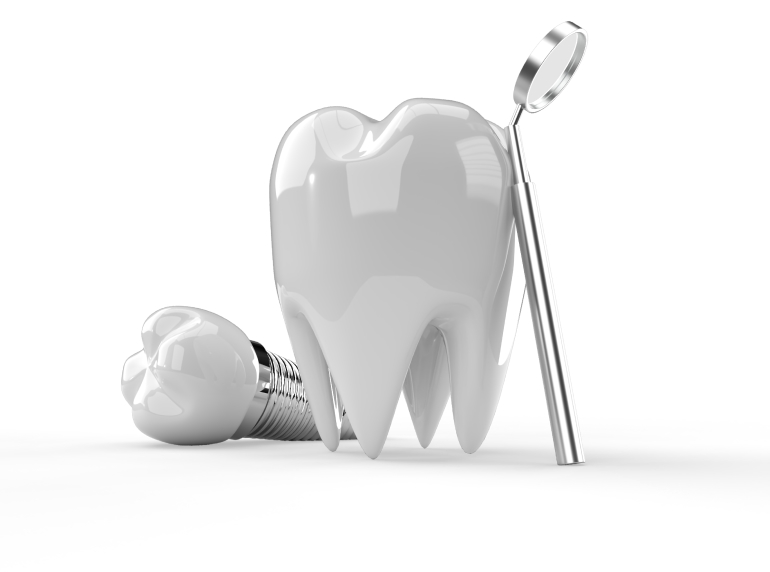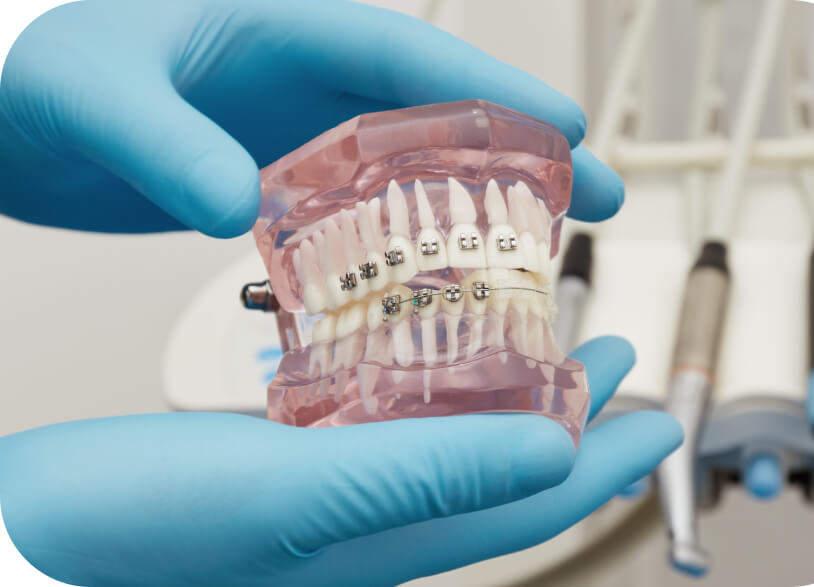ADD BEAUTY TO
YOUR SMILE
WHAT IS ORTHODONTIC TREATMENT?
HOW IS ORTHODONTİC TREATMENT APPLİED?
There are some stages for the application of orthodontic treatment. These stages can be listed as follows;

First, a mouthpiece is placed in the patient's mouth. This mouthpiece is used to facilitate the dentist's access to all tooth surfaces.

The tooth surfaces are cleaned by the orthodontist. With the help of tooth cleaning, tooth surfaces become suitable for bonding brackets.

After cleaning the tooth surfaces, adhesive is applied on the brackets and the brackets are adhered to the cleaned surface of the teeth.

Adhesive applied brackets are tempered by exposing them to blue light for a certain period of time.

Braces are selected and placed on the adhered brackets according to the needs of the patient.

As a final step, the braces treatment is completed by attaching tires on the brackets so that the wires do not come out.
HOW LONG DOES BRACES TREATMENT TAKE?
IN WHİCH SİTUATİONS IS ORTHODONTİC TREATMENT APPLİED?
Orthodontic treatment is one of the dental treatment methods mostly applied to treat the distortions in the alignment of the teeth. Of course, orthodontic treatment is the preferred method not only for the disorders in the alignment of the teeth, but also for the treatment of some disorders that occur in the jaw and jawbone. In other words, orthodontic treatment is basically applied to treat 6 different tooth and jaw disorders. These 6 situations can be listed as follows;
– Overbite; It is the condition that the teeth in the upper jaw cover the teeth in the lower jaw more than they should. In other words, if the upper jaw is ahead of the lower jaw, orthodontic treatment is preferred.
– Underbite; It is the condition in which the teeth in the lower jaw are ahead of the teeth in the upper jaw. In other words, if the lower lip exceeds the upper lip, orthodontic treatment is preferred.
– Crossbite; It is the closure of the lower jaw and upper jaw in the form of test closing.
– Open Bite; It is a condition defined as the closing of the posterior teeth but not closing of the front teeth. This condition can be treated with orthodontic wire treatment.
– Interdental Spaces; In case of tooth loss due to genetic or other reasons, orthodontic treatment can be applied to eliminate existing interdental spaces.
– Crowded teeth; It is defined as the overlap of one or more teeth. Insufficient space on the chin can cause crowded teeth. In such cases, orthodontic treatment is the most preferred treatment method.
WHAT ARE THE TYPES OF DENTAL BRACES?
– Transparent Dental Braces; This type of dental braces is the preferred type of braces defined as “porcelain” or “transparent”, where the brackets are the same as the tooth color. Transparent dental braces are considered more aesthetic than other braces. However, since the durability of the braces is less than other types of dental braces, especially metal braces, care should be taken with the care of the braces.
– Metal dental braces; It is considered a more durable type of braces than other types of dental braces. For this reason, it is the most preferred type of dental braces by orthodontists. From an aesthetic point of view, it is not considered as aesthetic as transparent dental braces.
– Invisible- Lingual Braces: This type of braces is the type of dental braces described as “invisible” braces. This type of dental braces is applied by sticking to the back surfaces of the teeth, not the anterior surfaces of the teeth. This type of dental braces goes unnoticed by other people unless specifically shown. It is the type of dental braces most frequently preferred by patients with aesthetic anxiety.
FREQUENTLY ASKED QUESTIONS
Is it a problem if the jaw is forward or backward, although the tooth alignment is straight?
How should oral and dental care be during orthodontic treatment?
Is there only wire treatment in orthodontic treatment?
Wires are generally used to correct the alignment of the teeth, but with the developing technology, transparent plaques, porcelain brackets and brackets fixed to the back surfaces of the teeth can be used.
Can an impacted tooth be replaced with orthodontic treatment?
Since the impacted tooth cannot find a place to come out, if it is impacted, it can be performed with orthodontic treatment.
What happens if the night appliance given after orthodontic treatment is not used?
These appliances, which are given after orthodontic treatment, support the final shape of the teeth and the preservation of tooth alignment. If these appliances are not used, there may be deterioration in the tooth alignment.
What happens as a result of the bracket falling off?
WHY US?

Dentists & Our Specialists

Success Performance in Treatments

Central and Accessible
Providing service on weekends
Modern clinic, state of the art equipment
In the busiest place of Istanbul

ACHIEVEMENTS

20 YEARS
EXPERIENCE

25.000 +
SMILLING PATIENTS

12.000
SUCCESSFUL OPERATIONS






